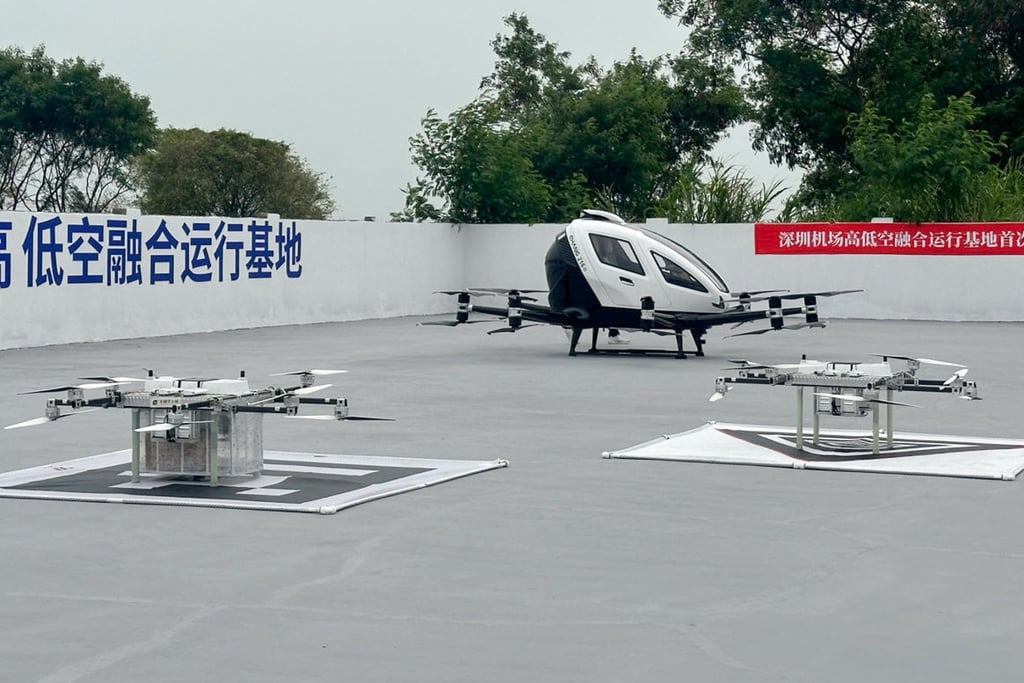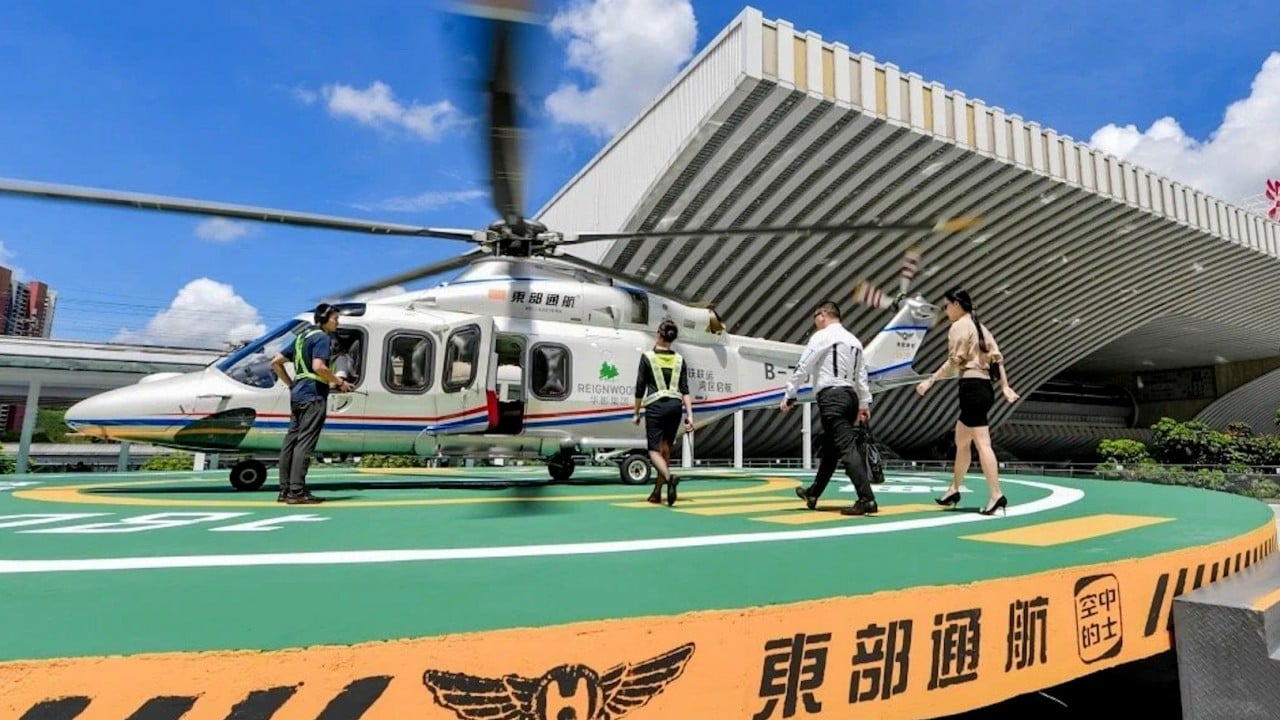Explainer | What’s the buzz with China’s low-altitude economy, and what is propelling its development?
For anyone following China’s economic development and policy updates this year, it is hard to miss the rising buzz around the “low-altitude economy”, a term increasingly touted as a new growth driver for a national economy struggling to find new sources of momentum.
As China’s traditional real estate and infrastructure investment-based development model can no longer sustain high-quality economic growth, central and local authorities are turning their sights from the land to the skies.
“Low-altitude economy” generally encompasses manned and unmanned activities within airspace below 1,000 metres (3,280 feet), but the range can be extended to 3,000 metres depending on regional and practical needs.

What are practical applications of China’s low-altitude economy?
1. Transport
Technology for electric vertical take-off and landing (eVTOL) aircraft, aka flying cars, is being developed for airport shuttles and intercity air travel, providing air taxi and logistics services.
Shanghai-headquartered Autoflight has announced that eVTOL fares could drop to 6 yuan (84 US cents) per kilometre, potentially lowering the cost of a 20-minute flight from Shenzhen to Zhuhai to as low as 240 yuan, compared with the current two-and-a-half-hour drive.
The Yangtze River Delta is also advancing in this area, with eVTOL flights between Shanghai and Suzhou completing the journey in under 30 minutes for a few hundred yuan per person.
2. Logistics
Drones are being utilised to enhance last-mile delivery efficiency, including the transport of parcels and medical supplies, as well as emergency rescue.
Meituan this month launched Beijing’s first drone-delivery route at the Badaling Great Wall, providing tourists with heat-relief products and emergency supplies, marking the expansion of Meituan’s drone-delivery service across four major Chinese cities – Beijing, Shanghai, Guangzhou and Shenzhen.
3. Tourism and entertainment
Low-altitude aerial sightseeing and adventure activities such as skydiving and paragliding are being promoted, alongside city and natural landscape flights.
4. Agricultural and surveillance
Drones are employed for precision agriculture tasks such as pesticide spraying, environmental monitoring and disaster assessments.
The applications also include surveillance, infrastructure inspections and maintenance – including surveys of power grids, oil and gas pipelines, and bridges. Drones can also be deployed to monitor and offer relief amid catastrophes.
How are regions advancing low-altitude-flight development?
Several regions, including Beijing, Anhui and Suzhou, are prioritising the development of low-altitude flight scenarios to drive growth in the low-altitude economy.
Beijing’s action plan proposes establishing air routes between Daxing Airport and the Xiong’an New Area, and between Capital International Airport and regions such as Tianjin and Langfang, while exploring new urban air-mobility models.
Suzhou city, located west of Shanghai, aims to create an aerial corridor connecting the city with surrounding airports, enhancing regional connectivity.
Meanwhile, Anhui province is encouraging cities to explore eVTOLs for short-distance commercial transport, expand urban low-altitude flights and promote demonstrations of urban air-mobility applications.
In addition to these efforts, regions are working on simplifying airspace management. Plans include establishing low-altitude air-route networks, coordinating with military and civil aviation authorities, and optimising flight application processes to support the growth of urban air mobility and low-altitude infrastructure.
However, concerns have been raised about some regions “blindly following strategic trends”, rather than tailoring their emerging-industry policies to their specific conditions, as noted by Anbound, a Beijing-based public policy consultancy.
Who is leading the low-altitude economy?
The drone industry is the leading sector in the low-altitude economy, and Guangdong province holds a significant advantage in its development, owing to a high concentration of drone enterprises.
Guangdong cities such as Shenzhen, Guangzhou and Zhuhai are at the forefront of exploring policies related to the low-altitude economy, with the province placing particular emphasis on the layout and expansion of the drone-industry chain.
Shenzhen, home to major industry leaders such as DJI, EHang, and Zerotech, leads the country with the most low-altitude economy enterprises, followed by Guangzhou and Beijing.
In 2022, Shenzhen’s drone industry generated nearly 75 billion yuan (US$10.5 billion) in production output, accounting for 70 per cent of the national total, with consumer drones capturing 70 per cent of the global market share, according to local government figures.
By the end of 2022, the city had introduced a three-year plan for the sector’s high-quality development. Last year, the city incorporated the low-altitude economy into its government work report. And this year, Shenzhen enacted the country’s first legislation on the low-altitude economy – a success recognised by the national government.
Shenzhen had 1,730 drone-related enterprises as of last year, covering the entire value chain from manufacturing and R&D to software development.




